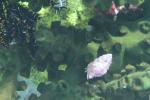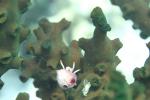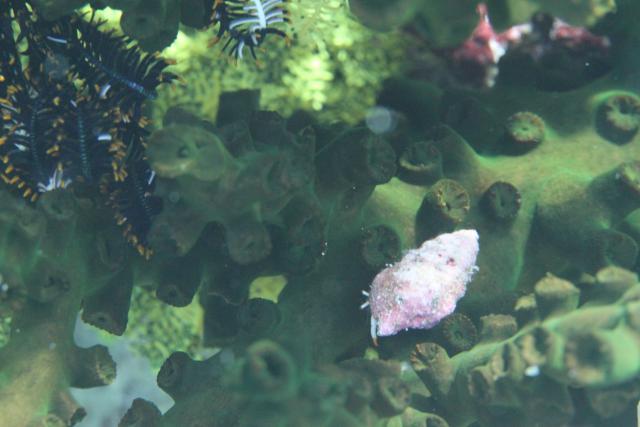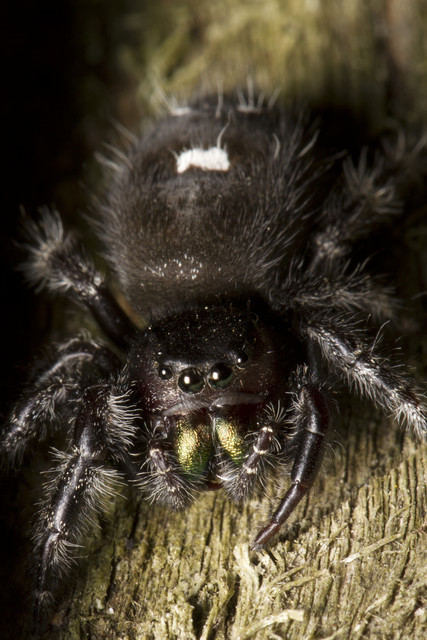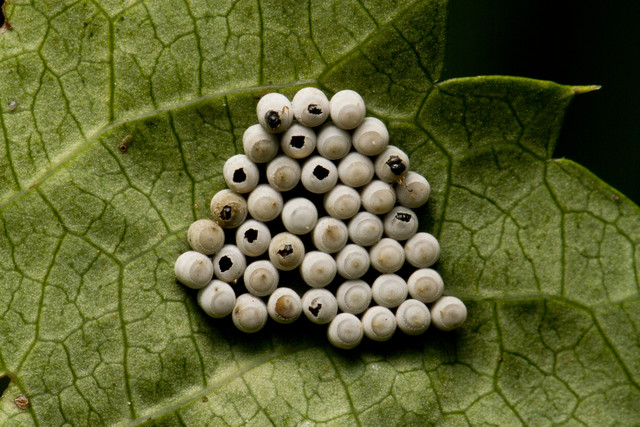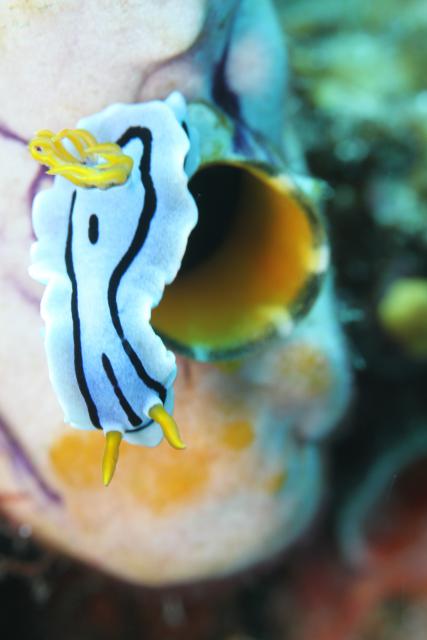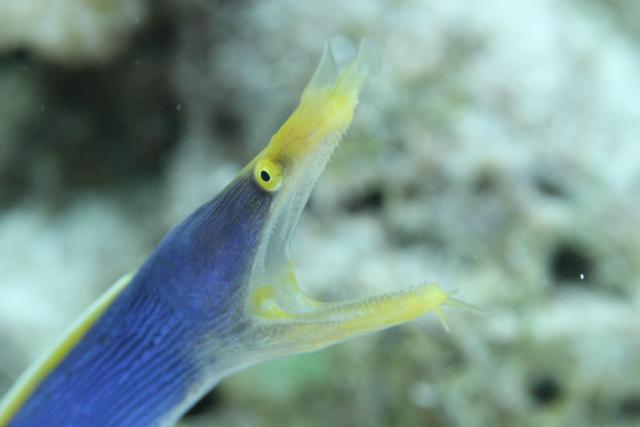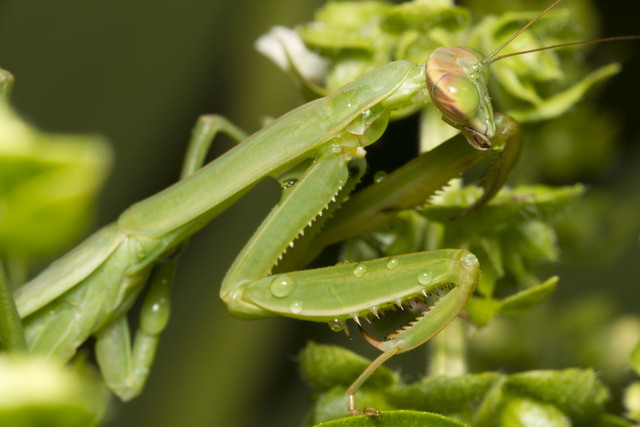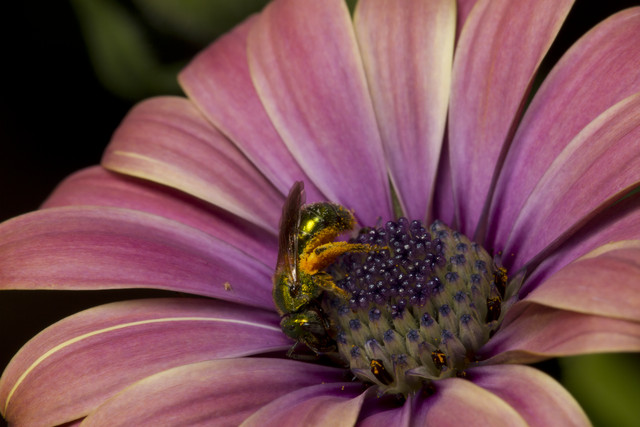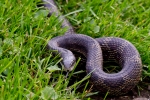flash
Wakatobi: Hermit Crabs in Pink Shells
ktuli — Mon, 09/05/2011 - 13:31
I really can't wait till my upcoming dive trip, so I've been going back through some of my old shots trying to figure out what I could have done better. In particular, the one major problem with both of these images is the perspective. The top down view is not simply not very appealing. In this case, it was necessitated by the subjects' positions within the coral.
Oddly enough, these shots were taken on different dives, but they appear to be on the same species of coral. Further, the hermit crabs may even be the same species (notice the white legs with orange tips). However, the top down view makes identification almost impossible.
Technical Data: Canon EOS 7D, Canon EF 100mm f/2.8L Macro IS USM, 1/60th & 1/25th sec respectively at f/11.3. Image Stabilization on. ISO 3200 & 400 (Auto). Ikelite Housing and Port with Ikelite DS161 Strobe in TTL Mode. No post production.
I'm sure I'll still use this technique when absolutely necessary, but will also try to make sure I get different angles of subjects when possible.
- Bill
Another Jumping Spider
ktuli — Thu, 09/01/2011 - 20:19
Jumping spiders are quickly becoming my favorite subjects... and this one was probably the largest jumping spider I've ever seen. If my calculations are correct, he was about 15mm long, and for jumping spiders, that's pretty hefty. But here he is in much larger detail.
Technical Data: Canon EOS 7D, Canon EF 100mm f/2.8L Macro IS USM, 1/250 sec at f/16. Canon Speedlight 580EX II flash in auto mode and wireless control. Image Stabilization on. ISO 100. RAW processing and cropped in Adobe Camera Raw. Powdermill Nature Reserve.
- Bill
Hatching Wasp Eggs
ktuli — Wed, 08/31/2011 - 20:44
I have to admit something about this photo - when I took it, I didn't even notice the fact that these eggs were hatching. In all fairness, they are only about 1mm in size, so they were pretty tiny.
Anyway, I happened to catch a glimpse of these white eggs attached to the underside of a leaf, so while I held the lead over with one hand, I had to steady the camera and shoot with the other. Not necessarily the easiest thing to do. Add in that the bright sun was wreaking havoc with my wireless flash capabilities (I need to remember to keep my sync cord with me for cases like that).
However, once I got home and looked at these on the computer, I realized that the wasps were actually in the process of hatching right then! Had I realized that at the time, I most certainly would have taken much more time with this subject and used the 2x teleconverter to get some even closer detail. As it is, you'll have to settle for a crop (mouseover the image for the cropped view).
Technical Data: Canon EOS 7D, Canon EF 100mm f/2.8L Macro IS USM, 1/250 sec at f/16. Canon Speedlight 580EX II flash in auto mode and wireless control. Image Stabilization on. ISO 160. RAW processing and cropped in Adobe Camera Raw.
Due to the bright sunlight, I don't think the flash actually fired, so I had to do some significant brightening of this in post production, and because of my less than recommended one-handed camera stabilizing techniques, there is a bit of camera shake blur that the IS wasn't able to fix (normally 1/250th a second wouldn't be a problem to hand hold, but with the flash bracket and one-handed operation, apparently that isn't the case).
Regardless, I thought the original image was interesting because of the beautiful pattern the eggs create, but finding the bonus of the wasps actually hatching is really really cool if you ask me.
- Bill
Wakatobi: Elisabeth's Chromodoris
ktuli — Mon, 08/29/2011 - 20:29
Well, it is official! I have my next dive trip scheduled! This time around, we'll be trying out some live-aboard diving with Caribbean Explorer going to Saba, St Kitts, and St Maarten.
To celebrate, here's a quick shot of another nudibranch from Wakatobi in Indonesia.
Technical Data: Canon EOS 7D, Canon EF 100mm f/2.8L Macro IS USM, 1/25th sec at f/8. Image Stabilization on. ISO 400 (Auto). Ikelite Housing and Port with Ikelite DS161 Strobe in TTL Mode. No post production.
The nudibranch is an Elisabeth's Chromodoris (Chromdoris elisabethina) and it is crawling on a tunicate.
I can't wait to go diving again!
- Bill
Wakatobi: Blue Ribbon Eel Close-Up
ktuli — Thu, 08/18/2011 - 21:16
Another dive photo today...
Technical Data: Canon EOS 7D, Canon EF 100mm f/2.8L Macro IS USM, 1/170th sec at f/8. Image Stabilization on. ISO 2500 (Auto). Ikelite Housing and Port with Ikelite 161 Strobe in TTL Mode. No post production.
Getting a little stir crazy here if you can't tell.
- Bill
Wakatobi: The Elusive Damselfish
ktuli — Wed, 08/17/2011 - 21:23
I've looked for this fish in my identification book dozens of times. As it turns out, there appear to be local variants, and the one in the ID book just doesn't look much like this.
These little fish are called Indian or Cloudy Dascyllus (Dascyllus carneus). They are a small damselfish up to about 2.5 inches, but often as you can see a group of them range from every size. In Wakatobi, they were on pretty much every table coral like this, and would dart back into the coral as you approached. I managed to get this shot by slowly approaching the coral from below and coming up so I was eye level with the fish.
Technical Data: Canon EOS 7D, Canon EF 100mm f/2.8L Macro IS USM, 1/40th sec at f/8. Image Stabilization on. ISO 400 (Auto). Ikelite Housing and Port with Ikelite 161 Strobe in TTL Mode. Auto-smartfix in Adobe Photoshop Elements 8 (mouseover for original).
Have I mentioned that I really want to get back in the water sometime soon?
- Bill
Formidable Weapons
ktuli — Tue, 08/16/2011 - 20:08
Just a quick post today, showing a less playful side to the mantis that played peek-a-boo...
Technical Data: Canon EOS 7D, Canon EF 100mm f/2.8L Macro IS USM, 1/250 sec at f/16. Canon Speedlight 580EX II flash in auto mode and wireless control. Image Stabilization on. ISO 100. RAW processing in Adobe Camera Raw.
- Bill
Wakatobi: Spotted Porcelain Crab
ktuli — Sun, 08/14/2011 - 21:14
I really need to get back in the water... soon.
Technical Data: Canon EOS 7D, Canon EF 100mm f/2.8L Macro IS USM, 1/25th sec at f/8. Image Stabilization on. ISO 400 (Auto). Ikelite Housing and Port with Ikelite 161 Strobe in TTL Mode. Auto-smartfix, Brightness -15, Contrast +10 in Adobe Photoshop Elements 8 (mouseover for original).
Why This Photo: I like porcelain crabs - they are cool little crabs... We only saw a few on the trip, and even though this isn't a perfect shot, I still like it.
What Works: While the original was a bit off with the crab up in the upper right corner facing out of the frame, the crop brings the face of the crab down to the bottom left corner and has it facing into the frame. The original exposure is a tiny bit bright, so I toned things down a little in PP.
What Doesn't Work: The focus is pretty good, but the shutter speed of 1/25th of a second produced a bit of blur because of the movement of the crab's feeding "claws". Also, unfortunately, the crab was resting on a drab anemone - which worked great for camouflage, but is kind of boring as a photo.
Like I said, I like porcelain crabs. This species - Neopetrolisthes maculatus - is a small crab (about 1.25" max) that lives in anemones. They feed with modified claws that they fan out to catch small particles out of the water. They do have larger claws that they mainly use for defending themselves and their host anemone.
I'd really like to reacquaint myself with one sometime soon... if I do, I'll bring you more photos, and hopefully improve on my mistakes made in this one.
- Bill
Pollen Covered Sweat Bee
ktuli — Thu, 08/11/2011 - 20:44
Ok - sorry, just doing another very quick post today...
Technical Data: Canon EOS 7D, Canon EF 100mm f/2.8L Macro IS USM, 1/250 sec at f/16. Canon Speedlight 580EX II flash in auto mode and wireless control. Image Stabilization on. ISO 100. RAW processing and cropped in Adobe Camera Raw.
This is a green sweat bee (Agapostemon texanus) - for obvious reasons... well, at least the green part. I was quite happy that the shot captured the metallic qualities of this bee, and I was just drawn to the shot because of all that pollen covering its legs.
Thanks for stopping by.
- Bill
Red Orb Weaver Spider
ktuli — Wed, 08/10/2011 - 17:48
Ok - been too long since I've done a spider post, so here's a nice orb weaver spider I shot a few weeks ago. I set this one up on my (old) tripod and was hand holding the flash for different angles (after having the dramatic lightning from a side position). However, it ended up being a straight on lighting was the best - especially to pickup the highlights on that beautiful web.
Technical Data: Canon EOS 7D, Canon EF 100mm f/2.8L Macro IS USM, 1/250 sec at f/22. Canon Speedlight 580EX II flash in auto mode and wireless control. Image Stabilization on. ISO 160. RAW processing and cropped in Adobe Camera Raw.
I think this is an Araneus species, but identification being what it is, I am not certain of which species. I really hope that some day I can find a really nice identification guide... that or I'm going to start making my own.
- Bill

